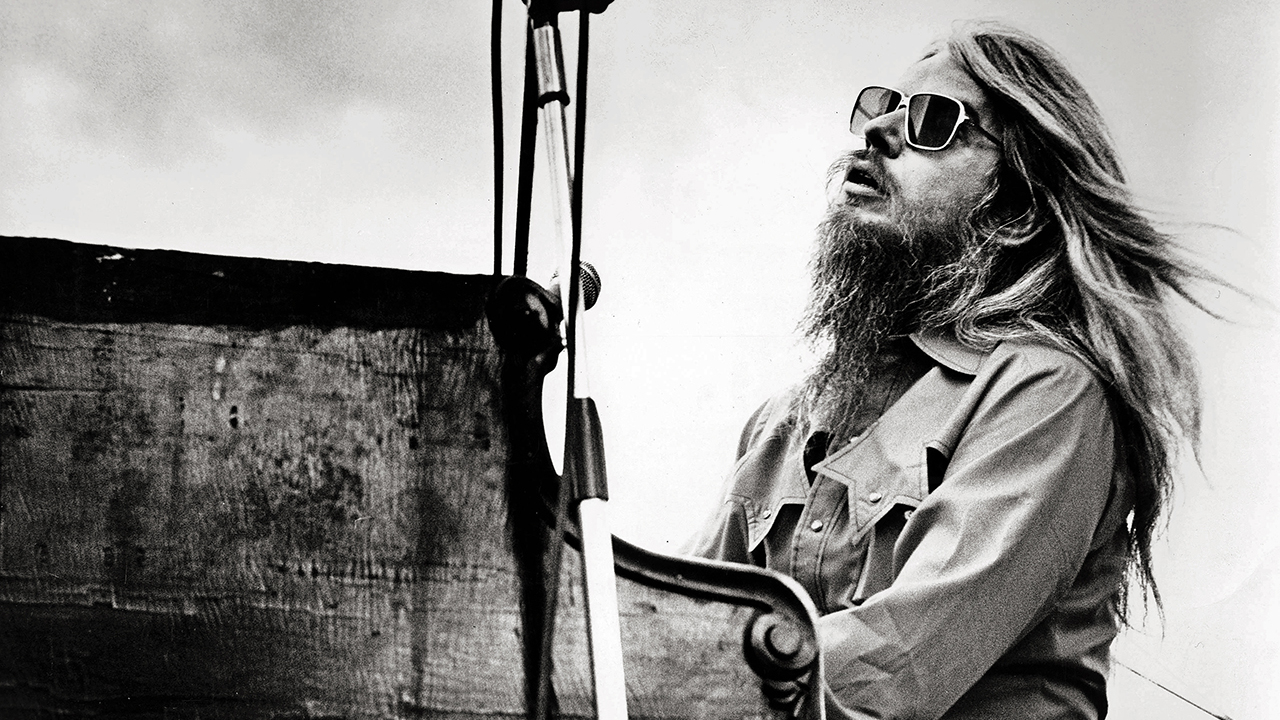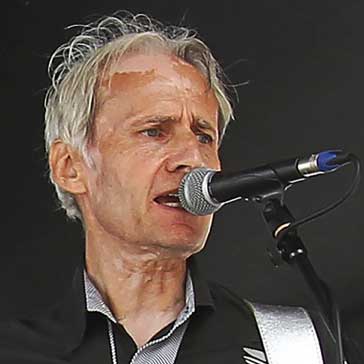With his flowing mane of silver hair and his long, silver beard, Leon Russell had become an iconic elder statesman by the time he was inducted into the Rock And Roll Hall Of Fame in 2011. That honour came in the wake of his album The Union, which he wrote and recorded as one half of a piano-man duo with Elton John. At the induction ceremony, John recalled the influence that Russell’s playing had had on him early in his career. “He sang, he wrote and he played just how I wanted to do it,” John said, declaring Russell to be “the master of space and time”.
In truth, the Hall Of Fame’s recognition of Leon Russell’s enduring talent and charisma was way overdue. The singer/songwriter/pianist/guitarist/producer/sideman extraordinaire, who died in Nashville at the age of 74, four months after suffering a heart attack from which he never fully recovered, left his signature on a vast range of pop and rock landmarks. As a songwriter his legacy of evergreen hits includes Delta Lady, which he wrote for Joe Cocker, and A Song For You, a number recorded by scores of acts over many years, notably Ray Charles whose version won a Grammy in 1993. As a piano man and producer with an insane CV, Russell contributed to recordings by acts including Bob Dylan (Watching The River Flow), the Rolling Stones (Live With Me), the Beach Boys (California Girls) and numerous others. And as a solo performer he released at least 31 albums in his own right, including the US gold-certified titles Leon Russell And The Shelter People (1971), Carney (1972) and the triple album Leon Live (1973).
Russell made his breakthrough in 1970 as musical director for Joe Cocker on the now mythical Mad Dogs And Englishmen US tour. The resulting live album made him a star on both sides of the Atlantic.
Russell was already well-travelled down the aisles of rock’n’roll history, even by then. Born Claude Russell Bridges in Lawton, Oklahoma, he was blessed with the authentic style of the American South in both his musicianship and his personality. He learnt piano from an early age, developing a unique approach tempered by a slight paralysis of his right hand. Pretending to be older than he was, he started performing in clubs at the age of 14. He moved to Los Angeles when he was 17, where he quickly established himself as a session musician.
He became one of the studio stars known, in hindsight, as the Wrecking Crew, a loose-knit circle of top LA session musicians constantly in demand during the 1960s and 1970s. The collective made their name to begin with as the musicians who played on Phil Spector’s early recordings, for which assignments they were known as the Phil Spector Wall Of Sound Orchestra. Russell played on the Ronettes’ hit Be My Baby and many others. He also studied guitar with the legendary James Burton, who went on to play in Elvis Presley’s band.
He joined the rock/soul collective Delaney & Bonnie And Friends in 1969, playing on their tours and albums alongside star names including Eric Clapton and George Harrison. When the Friends broke up in 1970, Russell recruited various members of the group for the Mad Dogs And Englishmen tour. Playing alongside Joe Cocker on stages across America, Russell found his metier as the ultimate rock’n’roll ringmaster. In his top hat and shades, singing in a deep southern drawl and hammering out his honky-tonk piano parts, he established himself as a larger-than-life character, who attracted as least as much attention as Cocker himself.
His arrival on the big stage was confirmed the following year when, along with Dylan, Clapton and Ringo Starr, he became a featured member of the supergroup assembled by George Harrison for the Concert For Bangladesh at Madison Square Garden, where Russell’s explosive version of Jumpin’ Jack Flash was a highlight of the event.
Russell’s career as a recording act in his own right began in spectacular style in 1970 with the release of a self-titled solo album made with a little help from his superstar friends – Harrison, Starr, Clapton, Mick Jagger, Charlie Watts, Bill Wyman, Stevie Winwood et al – and featuring the evergreen Song For You as its opening track.
He followed this with Carney (1972), which boasted the hit singles Tight Rope and This Masquerade. The album peaked at No.2 in the US, at which point Russell was as big a deal as any of the stars with whom he was used to playing in a supporting role. The following year, Leon Live reached US No.9.
Russell’s songs combined elements of soul, rock and gospel with a warm, southern flavour. The melodies were always carefully crafted, and many of his numbers became easy-listening standards, notably This Masquerade (George Benson’s version of which won a Grammy in 1977) and Superstar, a song co-written with Delaney & Bonnie Bramlett, which became best known as a hit for The Carpenters.
But Russell also journeyed deep into the heartlands of both blues and country music. He collaborated on three albums which revived the career of Texan guitarist Freddie King. And he made a succession of country albums under the pseudonym Hank Wilson. His collaborations (as Hank) with Willie Nelson brought him widespread acclaim as a country singer and a No.1 in the US Country chart for the duo’s 1979 version of Heartbreak Hotel.
Ahead of the release of the album The Union in 2010, Russell played his first UK show in as long as anyone could remember, at the Jazz Café in London. His rough-hewn voice retained its appeal and his distinctive piano technique was as beguiling as ever. As he and his band opened the show with Delta Lady, the years simply melted away. Speaking between numbers with an impossibly lazy twang, he told many amazing stories about his misspent youth playing bars in Tulsa, Oklahoma, and later of his time working with Dylan and other stars of the golden era.
A rock’n’roll oracle has left the stage.

